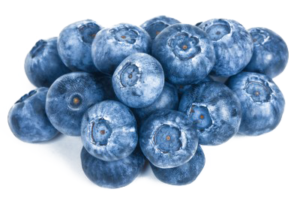Good news for those people who enjoy drinking a glass of orange juice each day. From NPR News:
What's More Nutritious, Orange Juice Or An Orange? It's Complicated
We all could probably eat more fruits and vegetables. But if forced to choose between whole fruit or a glass of juice, which one seems more healthful? The general advice is to opt for the fruit, since juices are stripped of the fiber – which most us don't get enough of — in whole fruit. And let's face it: Most juice contains a lot of sugar, which most of us consume too much of.
So our interest was piqued when we spotted a study suggesting that, when it comes to oranges, juice might actually unlock more carotenoids and flavonoids – both beneficial phytonutrients — than an equivalent amount of fruit.
To figure that out, German and Saudi researchers started with a big batch of fresh navel oranges. They analyzed the fruit in three forms: peeled segments, a mashed-up puree and as juice, both fresh-squeezed and pasteurized. They found that levels of vitamin C and carotenoids were basically the same in the juice and the unprocessed fruit, while levels of flavonoids were significantly lower.
But then the scientists threw their orange test foods into in a test tube model designed to mimic digestion, and that's when things got interesting: Much more of the carotenoids and flavonoids were released from the orange juice than from the fruit slices or mush. The differences were striking: Carotenoid release went up from nearly 11 percent in the fruit to 28 percent in the fresh juice, and up to 39.5 percent in the pasteurized juice. Meanwhile, flavonoids were boosted nearly five-fold in juice compared to fruit.
The findings, which appear in the Journal of Agricultural and Food Chemistry, are scientifically intriguing. For example, the researchers suspect heat may have something to do with the extra carotenoids released in pasteurized juice....That said, the new study "is in line with other studies that have found that nutrients in some fruits and vegetables are more bioavailable when the produce is chopped, mashed, juiced or prepared with oils," Blumberg notes in an email to The Salt.
Indeed, there's a whole avenue of research that is challenging our understanding of how to unleash the nutrition fixed inside fruits and veggies. For instance, as we've reported, we get more beta-carotene from tomatoes when we add a little fat like olive oil, and gently cooking carrots can coax them to release more nutrients. And while cooking broccoli for too long can destroy its antioxidants, chopping it is ideal.

 This wonderful opinion piece is by Dr. John Mandrola, a cardiologist who also posts on his own blog at
This wonderful opinion piece is by Dr. John Mandrola, a cardiologist who also posts on his own blog at  I bet eating fresh blueberries daily instead of blueberry powder would not only be more delicious, but also have even more health benefits. From Science Daily:
I bet eating fresh blueberries daily instead of blueberry powder would not only be more delicious, but also have even more health benefits. From Science Daily: Take note: the focus should be on getting magnesium from foods, not supplements. As the researchers warn: "your body absorbs magnesium from food differently than it does from supplements". From CNN:
Take note: the focus should be on getting magnesium from foods, not supplements. As the researchers warn: "your body absorbs magnesium from food differently than it does from supplements". From CNN: